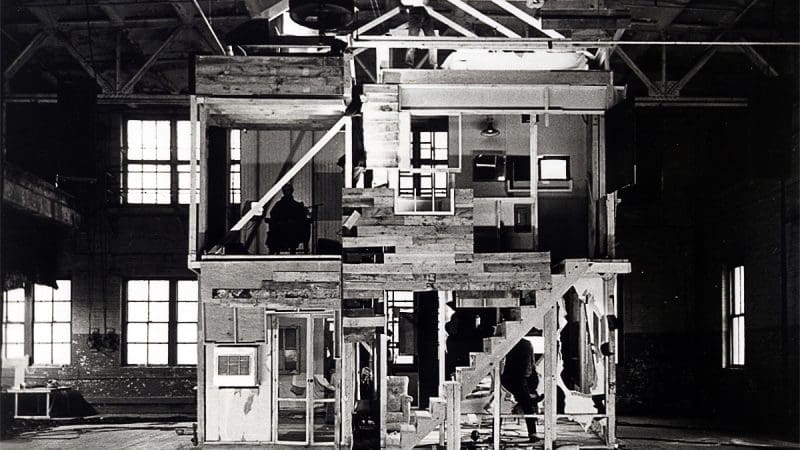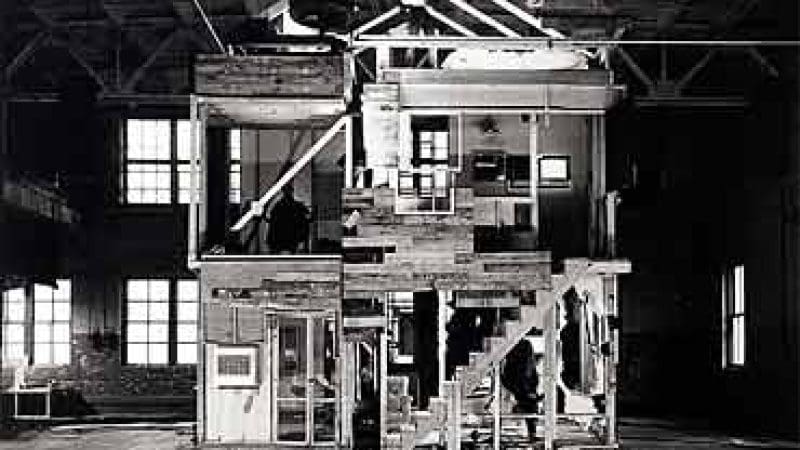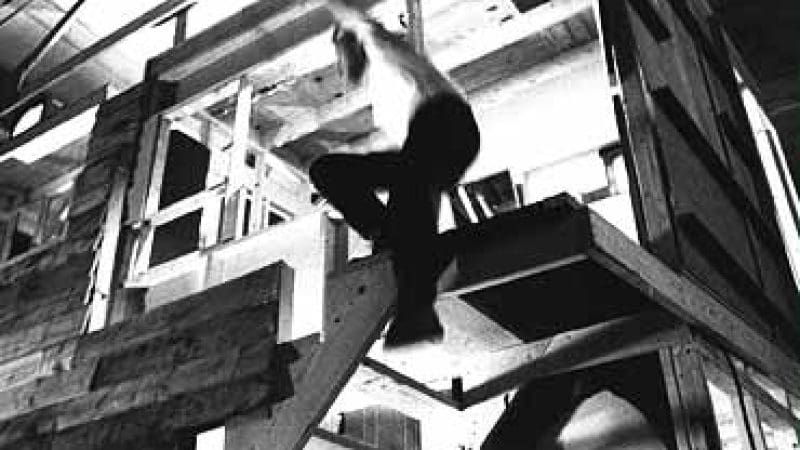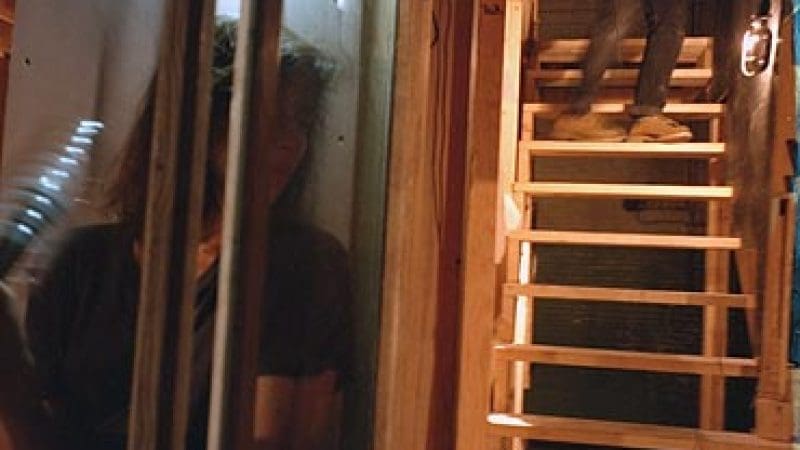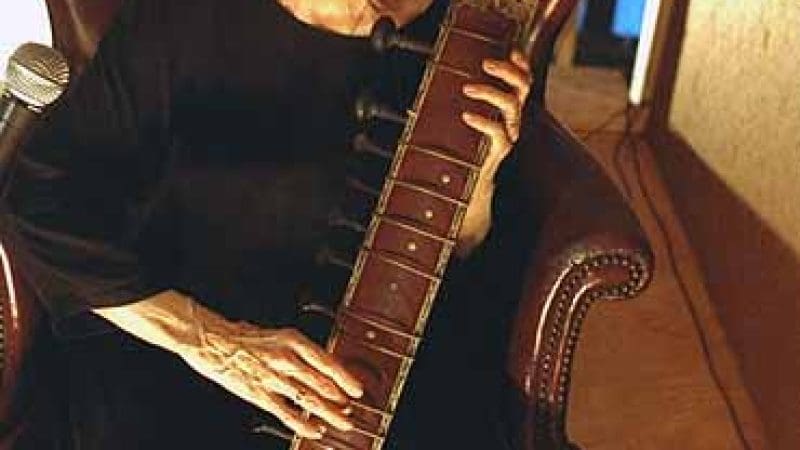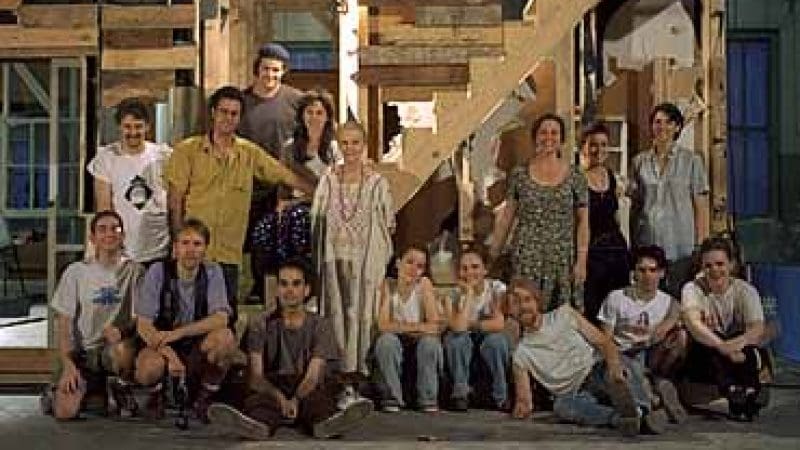MASTER BUILDER, a large-scale production used Henrik Ibsen‘’s classic play, The Master Builder, as a point of departure. Ibsen‘’s play is a nineteenth century study of family life that charts the disintegration of the ideals of love, security and fidelity. MASTER BUILDER explores what binds a family together and what drives it apart, unearthing the skeletons reflected in the skeletal structure of the house itself. The original performance was set in a full scale, dilapidated three-story house based on a photographic collage by Gordon Matta-Clark, and inspired by his work with what he termed the “architecture of the abject.” Throughout the performance, sections of the house were gradually demolished to reveal new and shifting perspectives. A video score, and a sound track were integral elements in the production, allowing Ibsen‘’s 19th century voice to speak through new media. The house was wired with MIDI triggers that the performers activated, setting off sound effects and musical phrases which transformed the house into an instrument which the performers played.
The interactive aspects of the set presented the possibility for MASTER BUILDER to function as an installation. During the day, the audience could explore the MIDI triggers and the various architectural “tricks” by which the house is transformed, and at night they could see how the same installation functioned theatrically.
In addition to Matta-Clark, other points of departure for the development of MASTER BUILDER included: Buster Keaton’s films about building and the American dream; Led Zeppelin‘’s rock n‘ roll; 1950‘’s industrial films in which the maintenance of the home and the ideological structure of the happy family are inextricably bound; and “This Old House,” a contemporary television show dedicated to helpful hints for building and maintaining a home. MASTER BUILDER was developed in a 17,000 square foot industrial warehouse located in New York‘’s Chelsea district from May-December of 1994. A section of the house with an excerpted performance by Jane Smith, Coco McPherson, and David Pence was on view at the STOREFRONT for Art and Architecture in New York in November 1995.

